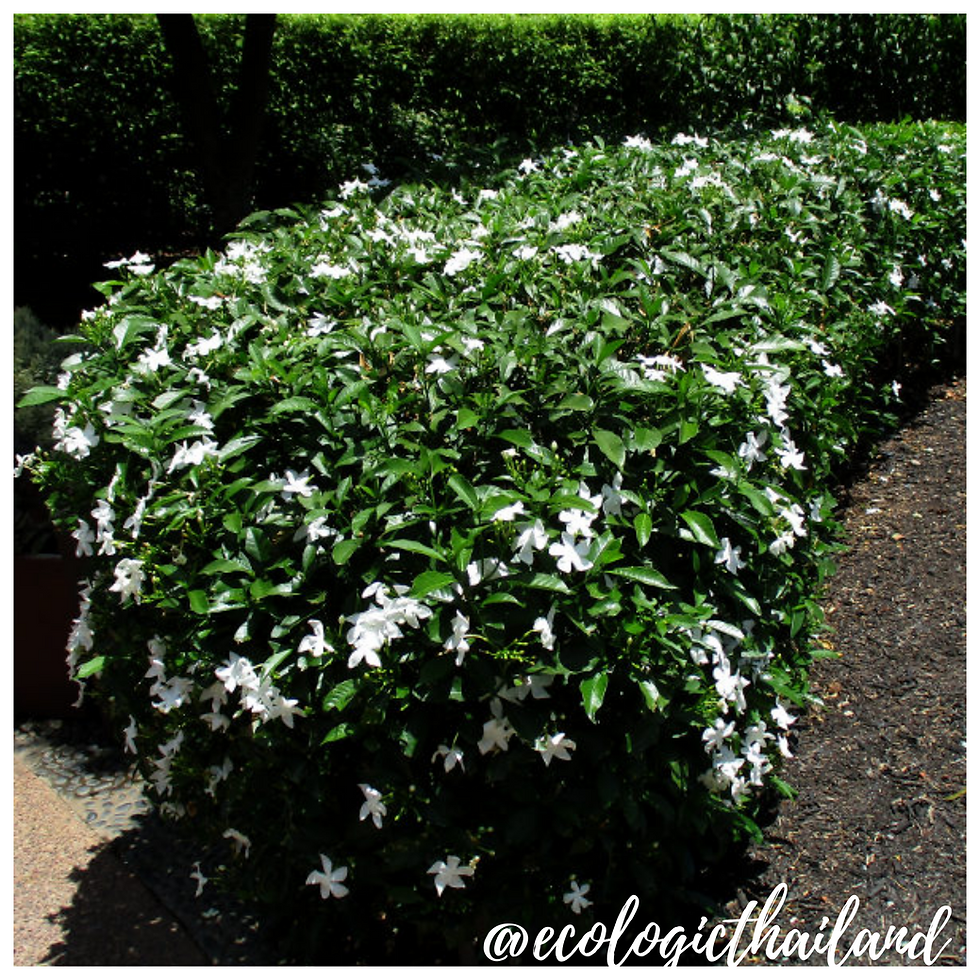Chenille plant
- Eco-Logic Resort
- Apr 12, 2021
- 2 min read
Hang Karok Daeng | หางกระรอกแดง | Acalypha hispida
Family: Euphorbiaceae - Genus: Acalypha

The Chenille plant can be found on the premises of TCDF and Eco-Logic and near the accommodation.
The Chenille plant, also known as Philippines Medusa, Red Hot Cat's Tail and Fox Tail can grow to be 1.5–4 meter tall, and has a spread of 1 to 2 meter.
The Latin specific hispida means “bristly”, referring to the pendent flowers which vaguely resemble brushes.
It is an erect shrub of soft stems cultivated by its precious and tiny flowers of a fiery red which hang on pendulous spikes and resemble the tassels of female plants.
The Chenille Plant flowers all year round.

THE PLANT
The chenille plant is a vigorous, upright, coarse-textured shrub that usually attains a height 1 to 2 meter. Older specimens can grow taller with some support. The stems are heavily foliated with 15-20 cm-long, ovate, medium-green leaves.
The plant is sometimes gathered for medicinal use.
All raw parts of the plant are mildly toxic if ingested.

THE LEAVES
The leaves of the Chenille plant are large, oval and bright green to reddish copper. The leaves are edible, when cooked.
All raw parts of the plant are mildly toxic if ingested.

THE FLOWERS
The flowers of the Chenille plant are attractive and droop in cattail-like, pendent clusters up to 40 centimeter in length. Flowers are showy, red, and borne by female plants during the whole year in warm climates.
All raw parts of the plant are mildly toxic if ingested.
CULINARY USES
The leaves can be eaten as a vegetable, when cooked.
All raw parts of the plant are mildly toxic if ingested.
TRADITIONAL MEDICINAL USE
NOTE: please take advice from a doctor if you are planning to use herbal medicine.
In Indonesia, the roots and flowers, fresh or in decoction, are considered a remedy for hemoptysis. The leaves are used to treat thrush]. A poultice of the leaves is used in the treatment of leprosy.
In Malaysia a decoction of the leaves and flowers is externally applied as an emollient to wounds and ulcers]. Internally, it is used as a laxative and diuretic in treating gonorrhoea.
The bark is applied as an expectorant in the treatment of asthma.
INTO THE WILD: a down to earth experience

For guests and visitors to Paksong we organize weekly tours "The Edible Forest" and Foraging weekends: Into the Wild. We work with local guides to take you in the jungle of Paksong. After foraging, we will cook a meal with the ingredients, using bamboo together with you!
Come and join and learn about the abundance of food that nature gives us!
INTO THE WILD!


















Comments